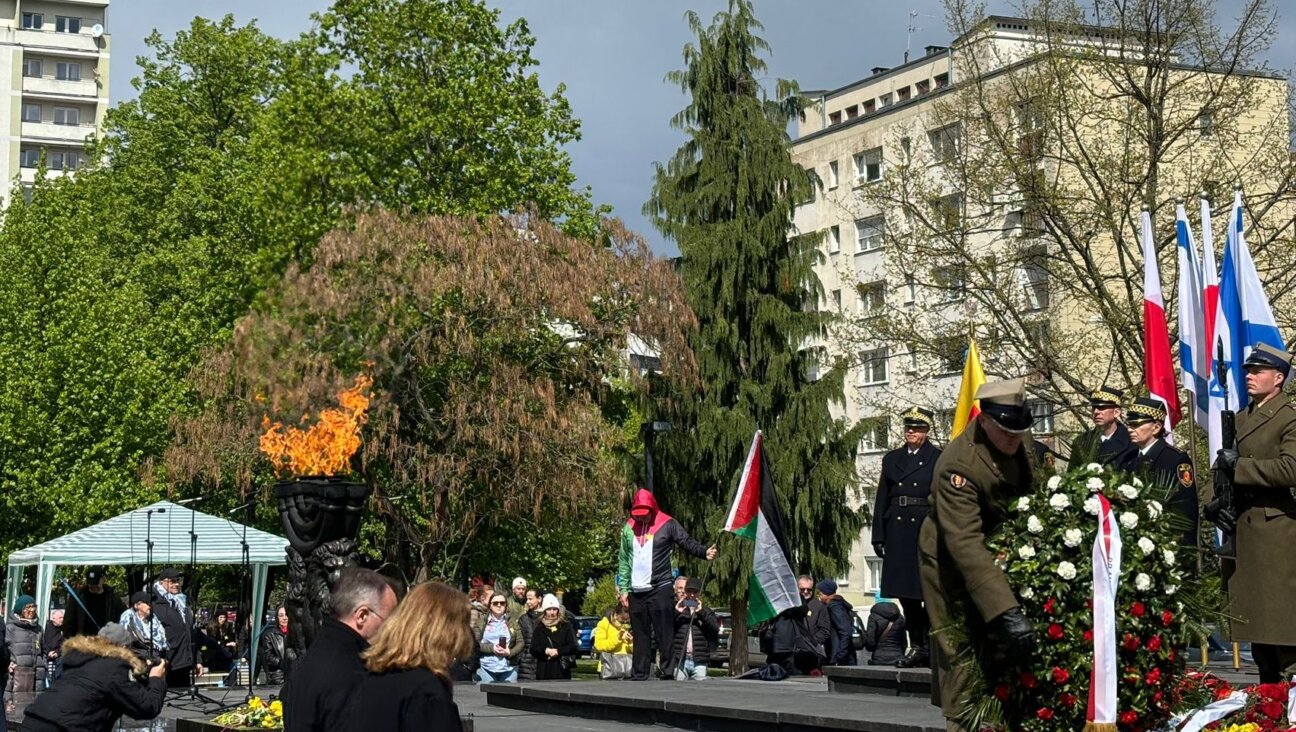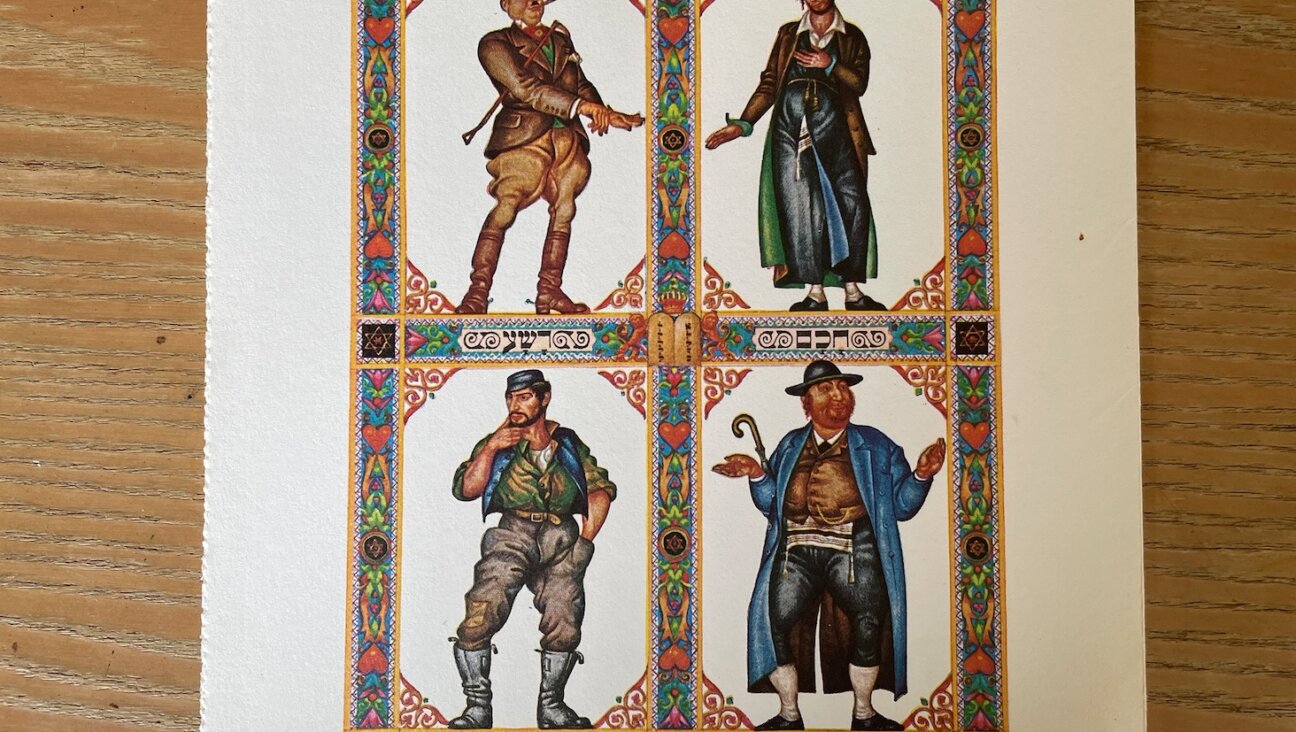The Rabbi Who Stumbled Into the Mystery of Alberto Nisman’s Death

Image by Twitter
(JTA) — In January 2015, Rabbi Marcelo Polakoff was stuck in Buenos Aires when his phone rang.
He’d been planning a trip to New York but a storm had canceled all flights, and Polakoff, the rabbi of Cordoba, a province in central Argentina, was cooling his heels at his sister’s house.
A woman he didn’t know was on the line. She introduced herself by saying that she remembered him from a wedding he’d performed for a friend of hers, and asked if he could help her family in Buenos Aires.
The woman was a cousin of Alberto Nisman, the Argentine federal prosecutor who was found dead last year, just days after accusing then-President Cristina Fernandez de Kirchner of covering up Iran’s role in the 1994 bombing of this city’s AMIA Jewish center.
Polakoff did not know Nisman, but the call brought the rabbi into a circle of private mourning, public outrage and global intrigue over an event that made headlines around the world.
Nisman was 51 at his death. He left behind a formidable tribe of women: his mother, Sara Garfunkel; her sister, the psychologist Lidia Garfunkel; a sister, Sandra Nisman; and his former wife, Sandra Arroyo Salgado, the mother of their daughters Iara, who was 15 at the time of her father’s death, and Kala, who was 8.
When the cousin called Polakoff, their usual rabbi was out of town. In fact, half the Nisman family was out of town. Polakoff was asked to accompany Nisman’s mother to identify his body.
Argentine law stipulates that a body must be formally identified before burial. On the day of his death, Sara Garfunkel had been taken by jittery police officers to Nisman’s apartment, where she was the first to see his lifeless body splayed on the bathroom floor in a pool of drying blood.
Ten days later, she was asked to view the body again at the city morgue.
“You can’t imagine,” Polakoff, 49, the president of the Latin American Rabbinical Assembly, told JTA. “Sandra [Nisman’s sister] decided not to enter, and Sara asked me to accompany her. Of course, it was very complex and difficult. But this is what rabbis do.”

Image by getty images
Polakoff uses his hands to frame a smallish oval on his face. That is what he was able to see of Alberto Nisman’s face when they were called upon to identify the body.
“The magnitude of an event like this can unfocus you,” said Polakoff, who had not told his story before speaking to JTA. “During this year and a bit, I’ve tried not to lose focus and to attempt to simply accompany the family. It is paradoxical that I didn’t meet Alberto Nisman alive. Incredibly, lamentably, it came to me to see him only in death.”
Polakoff also served as shomer, or guardian, of Nisman’s body at the funeral home in the hours before a public wake – a custom of Argentine Jewry distinct from the shiva.
“I was there alone with the coffin for a few hours — well, ‘alone,’” he said. “The streets were blocked off, there were barriers up, guards, snipers, helicopters, attack dogs, anti-terror vehicles.
“Later on, when people started streaming in, there was a waitress, not Jewish, who worked there who’d seen me since I slipped in, who came up to me sobbing, crying rivers of tears. She grabbed my arm and said, ‘Rabbi, I am incensed. I feel desperate. Did you see the deployment out there, even snipers on the roof?’ She’d noticed even that. A waitress. ‘If the prosecutor had had this kind of security two weeks ago, we wouldn’t be here today.’ Sobbing.”
For years, Nisman had received threats to his life and to the well-being of his family. His friends to this day aren’t certain if he was fully aware he was endangering his life by investigating Iran’s role in the bombing of the AMIA community center or in accusing Kirchner of covering it up.
Nisman was protected around the clock by a detail of the Argentine Federal Police. On Jan. 18, 2015, for unknown reasons, they refused to break down his door for the better part of a day when he stopped answering his phone.
Now his family is guarded by officers of the same security force.
“It’s a different government,” friends of the family point out, accurately but without conviction.
On Jan. 29, 2015, the hearse’s slow journey to the Jewish cemetery of La Tablada was interrupted by people jumping into the middle of street shouting “Nisman!” or “Argentina!” or both. Others threw flowers onto the car.
“At one point, while I was riding in the hearse towards the burial, someone jumped out and kissed the car, and it was then that I allowed myself to react, a little,” Polakoff said. “It was unbelievable, unbelievable.”
As part of his eulogy, Polakoff told a story directed at Kala, Nisman’s younger daughter. It was about a little boy her age who liked asking his rabbi tough questions. One day he asked why crocodiles, so ugly and dangerous, live so long, compared to butterflies, which are so pretty and benign.
“I don’t know,” the rabbi answered. “But I do know a crocodile can’t achieve in 1,000 years what a butterfly achieves in two weeks.”
Kala read aloud a letter to her father that ended “Bye Daddy, I’ll see you when I die.”
In January of this year, Mauricio Macri, the newly elected president of Argentina, invited the two Nisman girls to his home to mark the anniversary of their father’s death. Their mother was abroad, so they went with Polakoff.
“It was the two Macris with Antonia, their 4-year-old little girl and the three of us,” the rabbi recalled. “I read Psalm 23 and ‘El Maleh Rachamim’ and explained what it meant to the president.”
The president’s office tweeted an image of the gathering that went viral alongside the message that Macri promised the Nisman girls “there will be justice.”
Last month, a Buenos Aires court ruled that the investigation into Nisman’s death must be handled by a federal court, under the assumption that “the death of Natalio Alberto Nisman could also be a result of the act of a third party.”
Despite the tragic and tabloid-ready circumstances of Nisman’s death, Polakoff said he tries not to view it as anything but a particular family’s loss.
“When death comes early, is violent and has national and international significance, it should be indistinguishable” from any other, from a rabbi’s point of view, he said.
“Because for the person who has lost a loved one too early and violently, no matter what other transcendence the event may have … it is the same to me whoever is the person who died.”

I hope you appreciated this article. Before you go, I’d like to ask you to please support the Forward’s award-winning journalism this Passover.
In this age of misinformation, our work is needed like never before. We report on the news that matters most to American Jews, driven by truth, not ideology.
At a time when newsrooms are closing or cutting back, the Forward has removed its paywall. That means for the first time in our 126-year history, Forward journalism is free to everyone, everywhere. With an ongoing war, rising antisemitism, and a flood of disinformation that may affect the upcoming election, we believe that free and open access to Jewish journalism is imperative.
Readers like you make it all possible. Right now, we’re in the middle of our Passover Pledge Drive and we still need 300 people to step up and make a gift to sustain our trustworthy, independent journalism.
Make a gift of any size and become a Forward member today. You’ll support our mission to tell the American Jewish story fully and fairly.
— Rachel Fishman Feddersen, Publisher and CEO
Join our mission to tell the Jewish story fully and fairly.
Only 300 more gifts needed by April 30






















